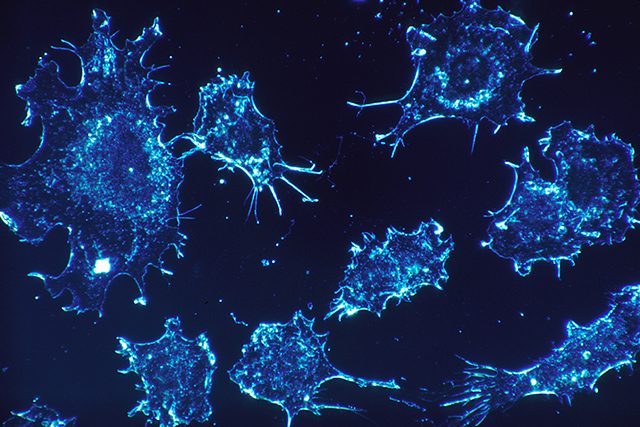How do cancer cells appear?
26 Jul 2017
About mutations of genes, functions of somatic cells and diagnostics of stomach cancer

The emergence of a tumor in the first approximation is the process of accumulation of mutations, that is, errors, in the genome of cells. As a rule, these are gene mutations associated with either proliferation (cell division) or apoptosis (programmed cell death).
There are powerful enough, including immune, mechanisms to deal with genetically altered or changing cells. A cell with damaged DNA must die with apoptosis. But if there were mutations that led to the fact that cells do not easily go into apoptosis, then they have a chance to turn into tumor cells.
Oncogenesis is always a process of accumulation of mutations. There must be several mutations before the properties of the cell change to such an extent that it can be considered a tumor. This is why tumors are more common in the elderly. If gerontology achieves success, we will often meet the development of tumors in humans.
The probability that there will be several mutations in one cell, with mutations that affect quite certain genes, is negligible. Therefore, in addition to the occurrence of mutations, selection of clones takes place, which is essentially identical to Darwinian natural selection. That is, a mutation occurs, the cells multiply. With a certain probability, one mutation will occur in one of the offspring of the mutated cell, these cells will also be shared, a mutation will occur among their descendants, and so on.
If each next mutation increases the cells' ability to uncontrolled reproduction, they get out of the body's control, and the clone formed by such cells gets the advantage. Among the clone cells, after the next mutation, the next clone is selected, which is even more independent of the organism, less susceptible to programmed cell death, and proliferates more actively. Even after the first mutation, we can say that these are abnormal cells, but only from a certain point and after a fairly long evolution they become tumor clinically.
The purpose of the diagnosis is to catch the tumor until it has reached the point where it is capable of killing the patient. If found on time, it is much easier to fight with a tumor.
There are tumors from which people should not die. For example, stomach cancer. It will not be, if after forty years in the required time to do gastroendoscopy - visual examination of the digestive system with the help of a gastroscope. The process of developing the tumor takes a long time, involves several stages, and you can catch the stage when it is still a polyp that can be removed.
Sometimes cancer cells are called ego-cells. A more successful definition was given by the well-known cell biologist Yuri Markovich Vasiliev. He said that cancer cells are cells with antisocial behavior.
It's not just that every normal cell of the body is under very strict control. Any somatic cell serves the purpose of transmitting the genetic material contained in the germ cells to the next generation (the person in the next generation usually receives one or two cells, all the other trillions of cells are needed only for this transfer to take place). All somatic cells are doomed. Therefore, the cell does not need to multiply more than the body needs. A tumor cell is a cell that behaves asocially: it multiplies more than necessary, not where it is needed, it does not have the properties that are needed by the given tissue. This cell really lives for itself.

 Cart
Cart





